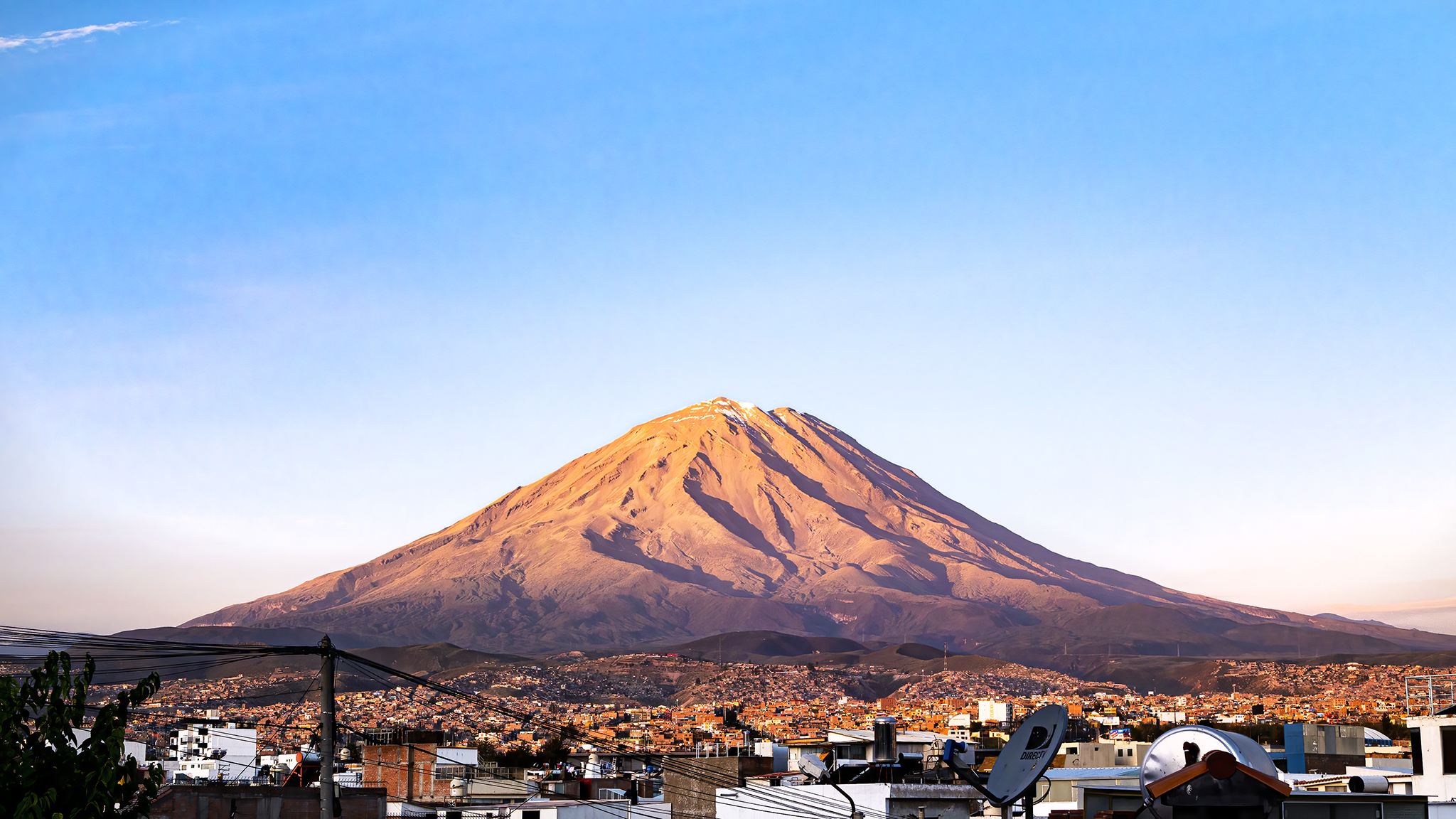Welcome to Arequipa! As Peru’s second-largest city, and arguably its most cosmopolitan, it remains a popular tourist destination, and is the gateway to the famous Colca Canyon.
Arequipa’s stand-out feature is El Misti – the huge, active volcano that towers over the city. Misti’s last significant eruption occurred in the 15th century, however its last major eruption was just over 2,000 years ago, and a similar eruption today would likely devastate the city of Arequipa.
Sophisticated early warning systems would likely significantly minimise, if not altogether avoid any human casualties, although much of Arequipa’s infrastructure would suffer significant damage.
However, it’s worth noting that most of Arequipa’s iconic white buildings were constructed out of ‘sillar’, a material mined from the same hardened volcanic flows that could potentially lay ruin to Arequipa if they were to occur again today. Misti poses a significant threat to Arequipa, yet at the same time, the city would not exist without it.
But regardless of whether Misti represents friend or foe for the city of Arequipa, it certainly looks pretty at sunset.

Arequipa represents one of the wealthiest parts of Peru, and it often feels like you’re wandering around a small town in Spain rather than South America.
As mentioned, the city’s volcanically-constructed colonial architecture remains one of Arequipa’s key tourist attractions. However, it’s worth noting the significance of that often-overlooked word – colonial.
While the city’s buildings are undoubtedly impressively intricate and grandiose, the vast majority were built on the back of slave and indigenous labour, an uncomfortable fact that Arequipa as a city seems determined to overlook.
Slavery was outlawed in Peru shortly after they gained independence from the Spanish in the mid-19th century, and nowadays, the country also has a much healthier (though certainly not perfect) relationship with its indigenous populations.
Like many other countries in South America, Peru is today well-known for its culture of protest. Indeed, if you look closely at the above photo of the cathedral in Arequipa’s central plaza, and zoom in on the clock, you may notice something interesting.
In 1950, local students in Arequipa took to the plaza to protest against governmental policies. The military were deployed and subsequently opened fire on the protestors, killing many. During the chaos, a stray bullet hit the Cathedral’s clock, and more than 70 years later the bullet hole still remains there, serving as a reminder of this tragic day in Arequipa’s history.
–
Images:
El Misti Volcano, Arequipa, Peru
Basílica Catedral, Plaza de Armas, Arequipa, Peru


